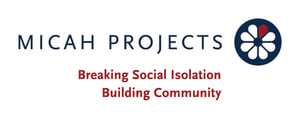
So how do you make the most complex of multi-site project roll-outs a success? A partner with the right network of technicians is an important starting point. If you hit a snag when you’re about to go live in Mount Isa, you don’t want your technician to be waiting for a flight out of Sydney.
Project Management
Experience helps of course, but even more, a well-refined process borne from that knowledge is key because it ensures consistent delivery. Getting it right up-front is a necessity. Dealing with hiccups on a single site project may be inconvenient; multiplying that by six hundred scattered sites is something else entirely.
Part of that process is an absolutely clear definition of authority: who is responsible for what? Who manages changes? Nobody wants to be getting the run-around from their technology partner when they’ve got the nation’s media arriving for a business launch.
Understand your requirements
Don’t be afraid to ask for something unusual. Among projects we’ve worked on, we have transported sensitive data, highly specialised equipment, and even arranged dedicated vehicles with police and security escorts. Thanks to tried and tested contacts and detailed planning, we have even arranged office furniture and whitegoods.a
Starting with a clear scope is vital, and detailed costing prevents nasty surprises. We ask a lot of questions up-front, and our motto is ‘you speak, we listen.’ Every aspect of the projects should be documented and accounted for, and any additions should be addressed by your technology partner at the time through the change management process. Any good partnership, after all, benefits from clear expectations and transparency. We’ve heard of projects that had no change management plan at all – needless to say, they were tales of woe!
Be transparent
It is important that you have access to information whenever you need it. We launched an app that our customers can use to view any aspect of their project at any time. If they’re burning the midnight oil, or simply working in another time zone, they can always check on freight details, equipment status, technician schedules and more. On the same note, including 24/7 support on your shopping list saves a lot of stress at crunch time.
Even the best plans can get derailed by unexpected events. Australia has its share of natural disasters, of course, but even the more mundane occurrences can be hazardous. Power cuts, leaky roof, even flu season have been known to present challenges. The best project managers think ahead, and make contingency plans for every eventuality. This is what separates the professionals from the rest of the pack. Risk management is a vital element of a multi-site rollout, and it should never be skimped on.
Our best project managers understand that no plan is set in stone. Aside from helping us to work around changes in your business, it also means that they have the right mindset to consider improvements. Given how fast technology is changing, and markets are transforming, agility must be as much a feature of your technology partner as your infrastructure.
Debrief with your team and partners
When it is all over, and your sites are all running smoothly, the job still isn’t done. Invite your technology partner to debrief with you. Every project has lessons that can be applied when planning the next one. No doubt there will be more time where
For more about multi-site technology rollouts, contact the Truis project management experts.
Subscribe to stay up to date with the latest news and updates
Related posts
How MSPs can help IT departments overcome talent shortages
Think about the planning that goes into rolling out a new IT solution. Now, imagine rolling that solution out to 600 retail locations within weeks.
Read articleHow managed services improve efficiency
Think about the planning that goes into rolling out a new IT solution. Now, imagine rolling that solution out to 600 retail locations within weeks.
Read articleInterview | Katie Blue on building a standout support desk
Think about the planning that goes into rolling out a new IT solution. Now, imagine rolling that solution out to 600 retail locations within weeks.
Read article



